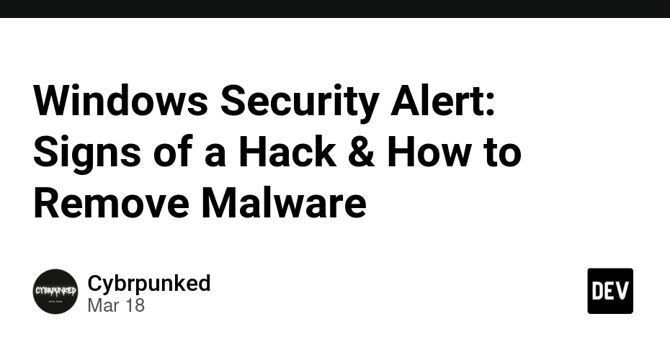Dev
2w
292

Image Credit: Dev
Windows Security Alert: Signs of a Hack & How to Remove Malware
- Windows OS being targeted by hackers is a common concern, requiring immediate action when a hack is suspected.
- Steps to contain a hack include disconnecting the system from the internet, quarantining the affected machine, and changing passwords on a separate device.
- Investigation involves checking for unknown users, recent logins, network connections, and scanning for malware/rootkits.
- Recovery involves removing threats, restoring the system, and reinstalling Windows if necessary.
- To strengthen security, enabling multi-factor authentication, updating software, using a firewall, and monitoring for threats are recommended.
- In case of a serious breach, contacting cybersecurity professionals and authorities is advised.
- Taking back control of a hacked Windows PC involves quick detection, malware removal, and proactive security measures.
- Keeping systems updated, using strong passwords, running scans, and enabling firewalls are key to preventing hacks.
- By staying vigilant and proactive, users can safeguard their Windows PCs against cyber threats and maintain data security.
- Securing personal information and minimizing vulnerabilities are essential practices in the face of evolving cybersecurity challenges.
- Being aware, informed, and prepared is crucial in maintaining a secure digital presence and protecting against potential hacks.
Read Full Article
17 Likes
For uninterrupted reading, download the app